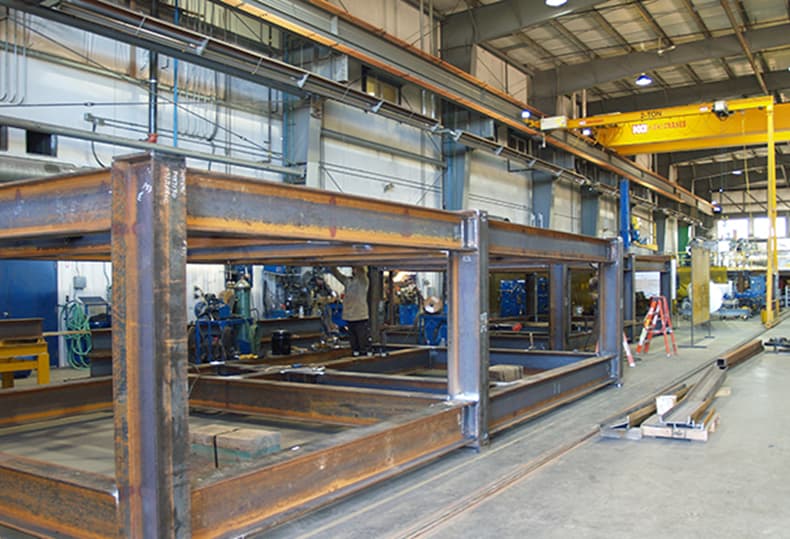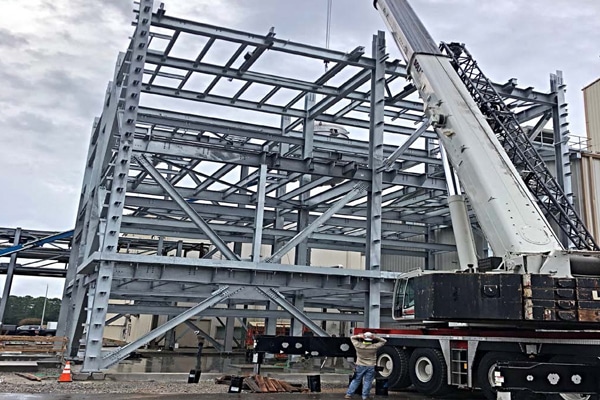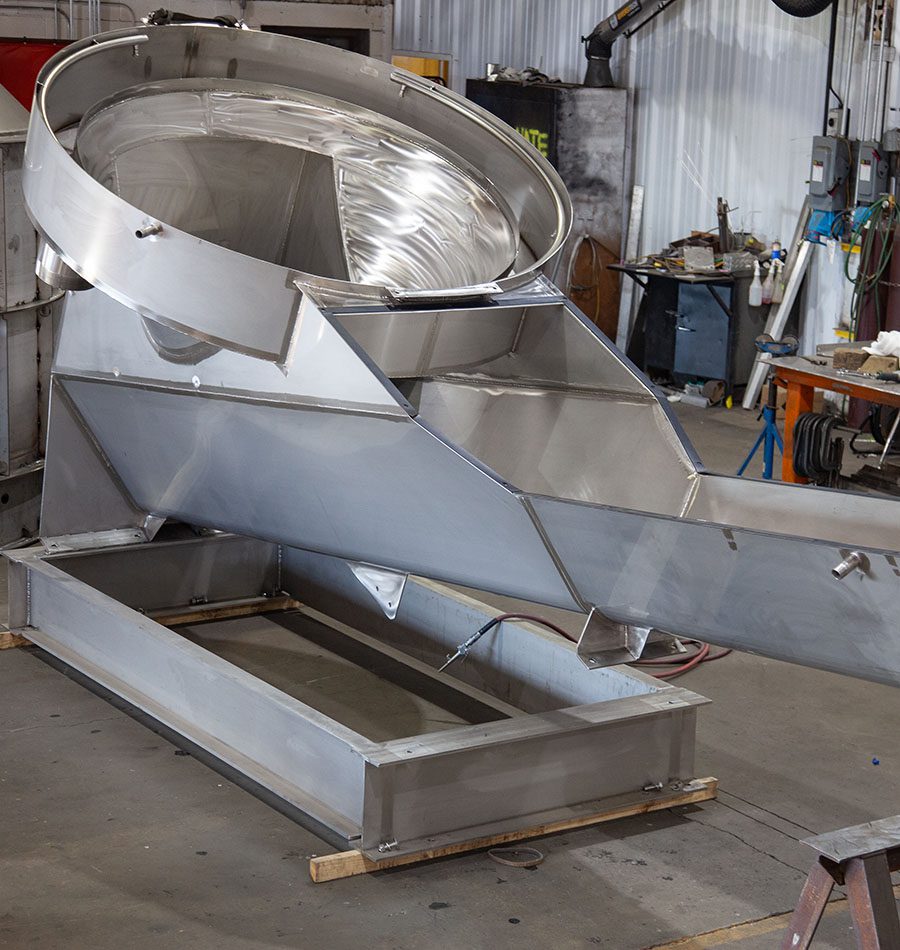Cutting-Edge Metal Fabrication Melbourne: Custom-made Solutions for Every Job
Cutting-Edge Metal Fabrication Melbourne: Custom-made Solutions for Every Job
Blog Article
Ingenious Trends in Steel Fabrication: Enhancing Resilience and Precision
In the world of steel construction, the pursuit of durability and accuracy has brought about a wave of cutting-edge fads that are reshaping the industry. From innovations in welding innovations to the integration of robot automation in fabrication procedures, the landscape of steel production is advancing quickly. High-strength alloy development, coupled with the use of 3D modeling and simulation software, is pressing the limits of what is possible in terms of architectural integrity and accuracy. Moreover, the growing focus on sustainable methods in steel production is not only driving performance however additionally fostering a much more environmentally mindful strategy to fabrication. These patterns are not simply forming the here and now but likewise laying the foundation for the future of steel fabrication, promising further enhancements in longevity and precision.
Advanced Welding Technologies
In the world of steel manufacture, the adoption of innovative welding technologies has actually considerably revolutionized the market's approach to attaining exceptional top quality and precision in architectural welds. Advanced welding technologies, such as laser beam of light welding and friction stir welding, have actually emerged as game-changers in the area. By leveraging these innovative welding methods, steel makers can elevate the longevity, stamina, and accuracy of their architectural welds, satisfying the significantly demanding demands of modern-day construction jobs.
Robot Automation in Fabrication
Accepting robot automation has actually become a foundation of modern-day steel fabrication practices, improving processes and improving efficiency across the sector. Robotics are revolutionizing the method steel elements are made, offering exceptional accuracy and rate while lowering human error. These automated systems can handle repeated tasks with constant accuracy, causing better final result.
One key advantage of robotic automation in steel fabrication is the ability to work around the clock without fatigue, considerably enhancing production outcome. This constant operation reduces downtime and accelerates job timelines, inevitably conserving expenses for makers. Furthermore, robotics can be configured to carry out elaborate tasks that may be dangerous or challenging for human workers, boosting safety and security in the office.
Moreover, robot automation enables seamless assimilation with other digital modern technologies, such as computer-aided design (CAD) software application and Net of Things (IoT) systems (steel fixing). This interconnected approach improves interaction in between various stages of fabrication, enhancing operations and ensuring real-time tracking and control. As the steel construction sector proceeds to evolve, robotic automation sticks out as a transformative pressure driving performance and accuracy in manufacturing processes

High-Strength Alloy Advancement
The innovation of high-strength alloy advancement in steel fabrication is improving the sector's method to enhancing material durability and performance. High-strength alloys are crafted to exhibit remarkable mechanical buildings, such as raised tensile toughness, sturdiness, and deterioration resistance contrasted to standard steel grades. By incorporating these advanced alloys into manufacture procedures, makers can create components that withstand greater stress and anxiety degrees and severe environments, leading to even more sturdy and trustworthy output.
One trick advantage of high-strength alloy development is the capacity to minimize material density without jeopardizing structural honesty. This not only results in lighter-weight parts however also contributes to set you back savings and boosted effectiveness in fabrication and setting up processes. In addition, the improved strength-to-weight ratio of these alloys enables for the design and building and construction of structures with greater load-bearing capabilities while lessening total weight.
3D Modeling and Simulation Software
Innovations in steel fabrication procedures have been substantially propelled by the combination of cutting-edge 3D modeling and simulation software application devices. These tools enable makers to create in-depth digital models of their jobs, allowing them to visualize the final item with precision before any type of manual labor starts. By simulating different stress and anxiety factors, environmental conditions, and structural tons, makers can maximize designs for enhanced toughness and efficiency. Additionally, 3D modeling and simulation software application enhance the manufacturing procedure by identifying potential problems early, lowering the demand for costly rework and reducing material waste.

Lasting Practices in Steel Manufacturing
Incorporating sustainable methods into steel manufacturing about his processes is vital for lessening environmental influence and making sure long-term source availability. One vital sustainable method is the fostering of energy-efficient modern technologies to lower greenhouse gas exhausts during the steel production process. This consists of using renewable resource sources, such as solar or wind power, to power steel plants and implementing energy-efficient devices to maximize energy usage.
Another vital facet of sustainable steel manufacturing is the liable sourcing of raw products. This includes making certain that the iron ore and other resources utilized in steelmaking are gotten from ethical and eco-friendly sources. By advertising openness in the supply chain and adhering to rigorous environmental standards, steel producers can reduce the unfavorable influences of source removal on local ecological communities and areas.

Final Thought
Finally, the innovative fads in steel fabrication such as advanced welding innovations, robotic automation, high-strength alloy advancement, 3D modeling and simulation software program, and lasting techniques are enhancing the longevity and accuracy of steel items. These developments are reinventing the steel manufacture industry by boosting high quality, efficiency, and sustainability. It is clear that the future of steel manufacture hinges on embracing these advanced modern technologies to satisfy the demands of contemporary construction and production industries.
In the world of steel fabrication, the quest of resilience and accuracy has actually led to a wave of ingenious patterns that are improving the sector.In the world of steel construction, the fostering of cutting-edge welding technologies has actually substantially reinvented the industry's approach to attaining remarkable quality and precision in structural welds. As the steel construction market proceeds to advance, robotic automation stands out as a transformative force driving effectiveness and precision in producing procedures.
Moreover, reusing and reusing steel scrap and waste products play a substantial function in boosting the sustainability of steel production. Alpha reo.In conclusion, the cutting-edge patterns in steel construction such as sophisticated welding modern technologies, robot automation, high-strength alloy advancement, 3D modeling and simulation software, and sustainable techniques are boosting the sturdiness and precision of steel products
Report this page